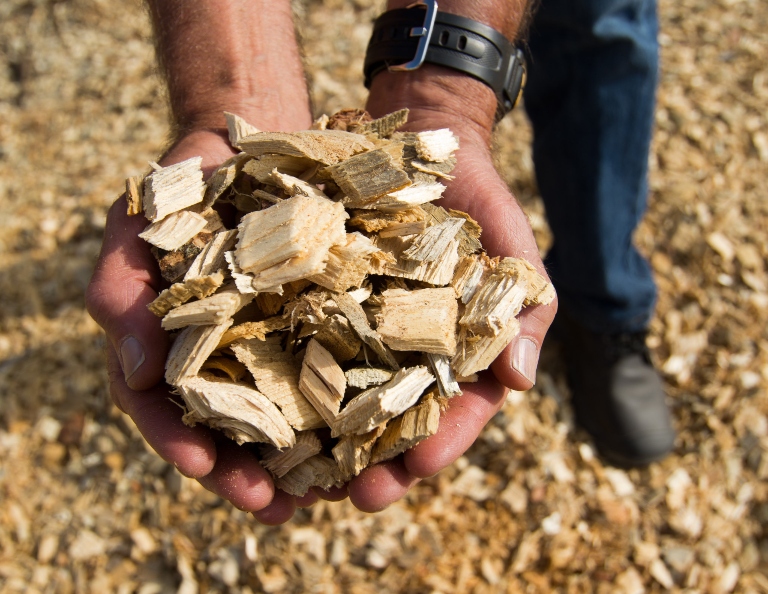- On this episode of the Mongabay Newscast, we look at two energy-related technologies that are being promoted as climate solutions, biomass and hydropower, which might have unintended consequences that hamper their ability to supply clean energy and thus might not be sustainable solutions at all.
- Our first guest is Justin Catanoso, a professor at Wake Forest University and long-time Mongabay correspondent. Catanoso tells us about the loopholes in renewable energy policies that have allowed the biomass industry to flourish under the guise of “carbon neutrality,” even though the burning of biomass for energy releases more carbon emissions than burning coal.
- We also speak with Ana Colovic Lesoska, a biologist by training who founded the Eko-Svest Center For Environmental Research in North Macedonia. Colovic Lesoska was instrumental in shutting down two large hydropower projects in her country’s Mavrovo National Park, but there are still more than 3,000 new hydropower projects proposed in the Balkans. She tells us why hydropower is being adopted by Balkan countries and whether or not hydropower can be a climate solution at any scale.
Today we’re discussing proposed solutions to the global climate crisis that could have unintended consequences and thus might not be the effective solutions they’re promoted as.
Listen here:
Nature-based solutions to climate change involve conservation, restoration, and better management of ecosystems that remove carbon dioxide from the atmosphere. On a recent episode we discussed an emerging nature-based climate solution, agroforestry, which is one of a variety of measures like reforestation and agroecology that experts say can help rein in the climate crisis naturally. But not all activities held out as climate solutions are likely to help, and some might even harm the climate. Today we’ll discuss a couple energy-related examples, biomass and hydropower.
We welcome to the show Justin Catanoso, a professor of journalism at Wake Forest University and long-time correspondent for Mongabay who focuses on climate change and climate policy. Catanoso hails from North Carolina, the state with more facilities producing the wood pellets burned for energy than any other in the US. Catanoso has covered the explosive growth of the biomass industry closely for Mongabay over the past several years, and he’s here to tell us about the massive loophole in the the European Union’s Renewable Energy Directive that allows the burning of woody biomass for energy to be counted as carbon-neutral even though it results in more emissions than burning coal, as well as what impact the Biden Administration might have on the biomass industry.
Here’s some further reading on biomass:
• “Will new US EPA head continue his opposition to burning forests for energy?” (4 February 2021)
• “EU renewable energy policy subsidizes surge in logging of Estonia’s protected areas (commentary)” (7 December 2020)
We also welcome to the show Ana Colovic Lesoska, a biologist by training who is also the founder and executive director of the Eko-Svest Center for Environmental Research in North Macedonia as well as a policy officer for WWF-Adria. Colovic Lesoska was instrumental in the “Save Mavrovo” campaign that successfully opposed the construction of two large-scale hydropower dams in North Macedonia’s Mavrovo National Park, work for which she was awarded the Goldman Environmental Prize in 2019. She’s here to tell us about the thousands of new hydropower projects proposed in the Balkans region in Southeastern Europe, the impacts these projects would have on the region’s rivers (the healthiest rivers left in all of Europe), and whether or not hydropower can be a solution to climate change.


If you enjoy the Mongabay Newscast, we ask that you please consider becoming a monthly sponsor via our Patreon page, at patreon.com/mongabay. Just a dollar per month will really help us offset the production costs and hosting fees, so if you’re a fan of our audio reports from nature’s frontline, please support the Mongabay Newscast at patreon.com/mongabay.
You can subscribe to the Mongabay Newscast on Android, the Google Podcasts app, Apple Podcasts, Stitcher, TuneIn, RSS, Castbox, Pocket Casts, or listen via Pandora or Spotify. You can also listen to all our episodes via the Mongabay website here on the podcast homepage.
Or download our new app for Apple and Android devices to gain fingertip access to new shows and all our previous episodes.

Follow Mike Gaworecki on Twitter: @mikeg2001
FEEDBACK: Use this form to send a message to the author of this post. If you want to post a public comment, you can do that at the bottom of the page.
